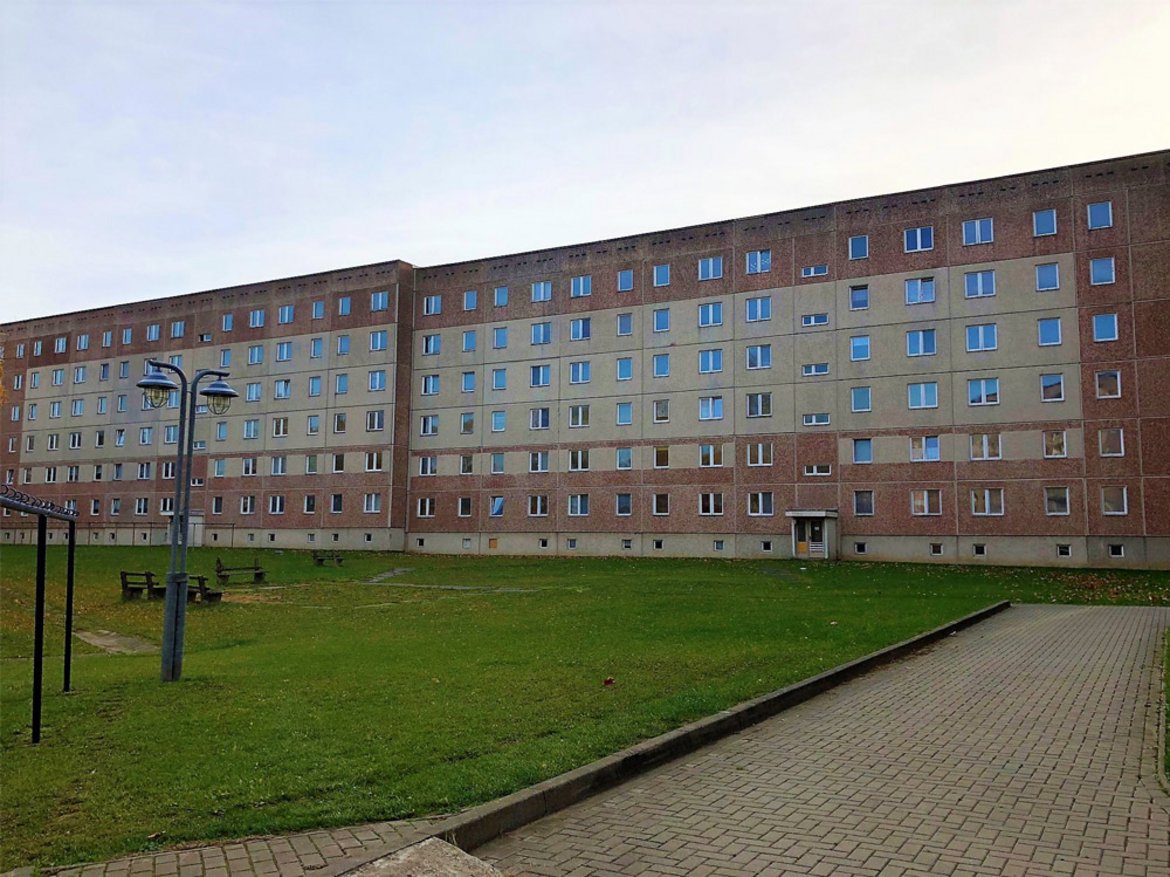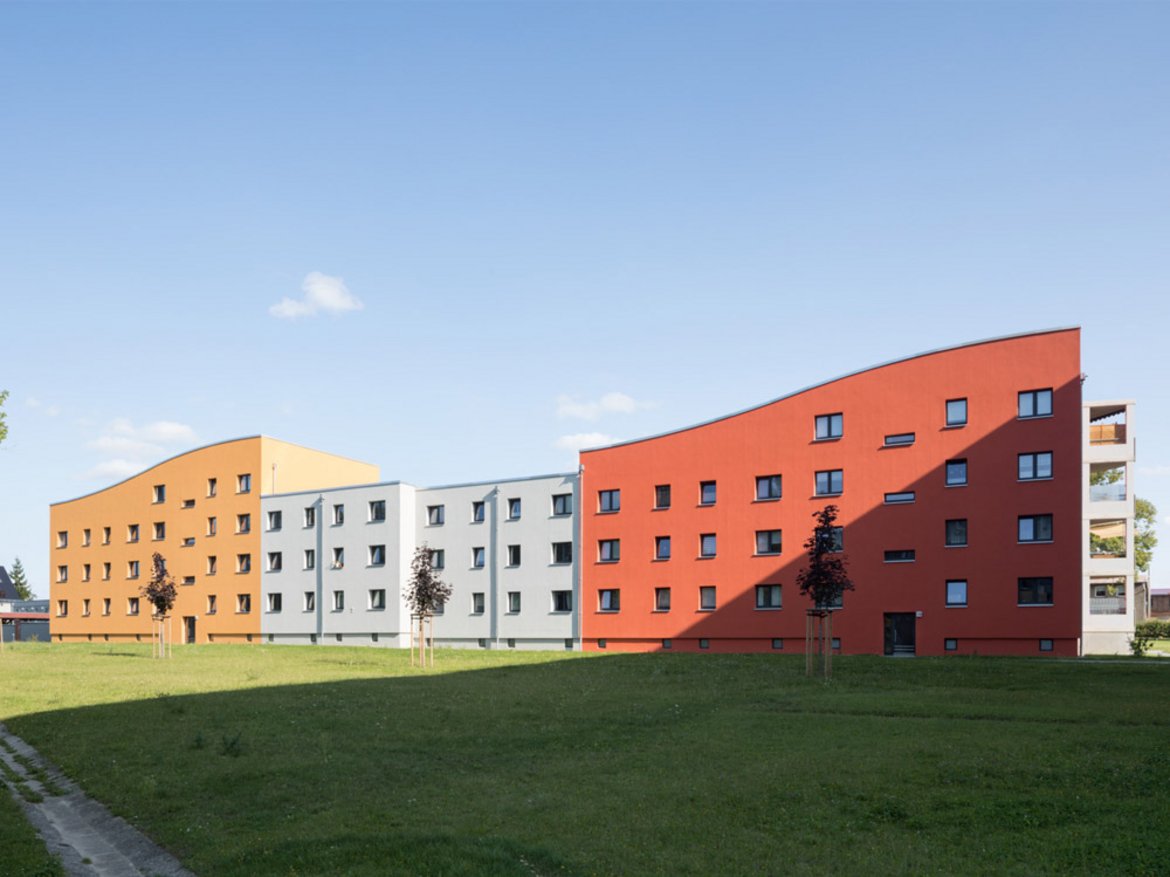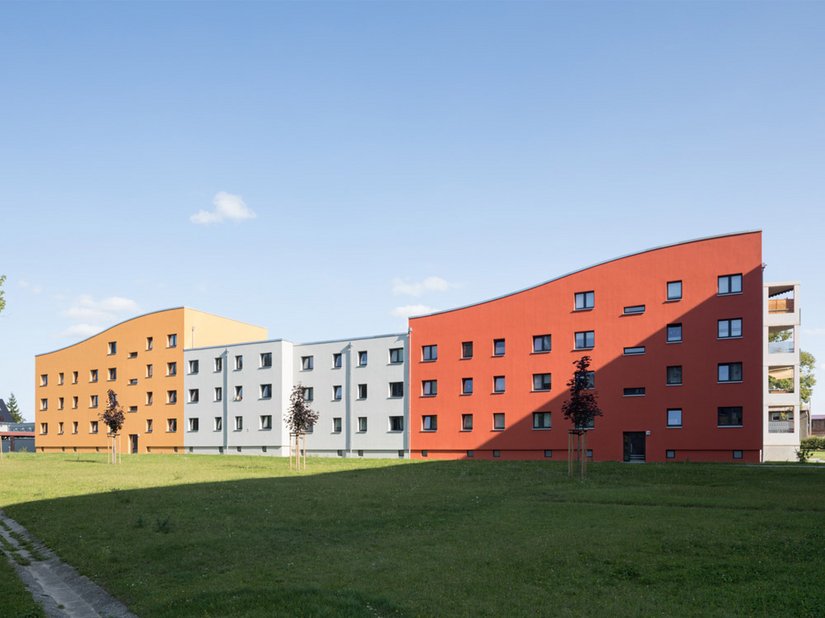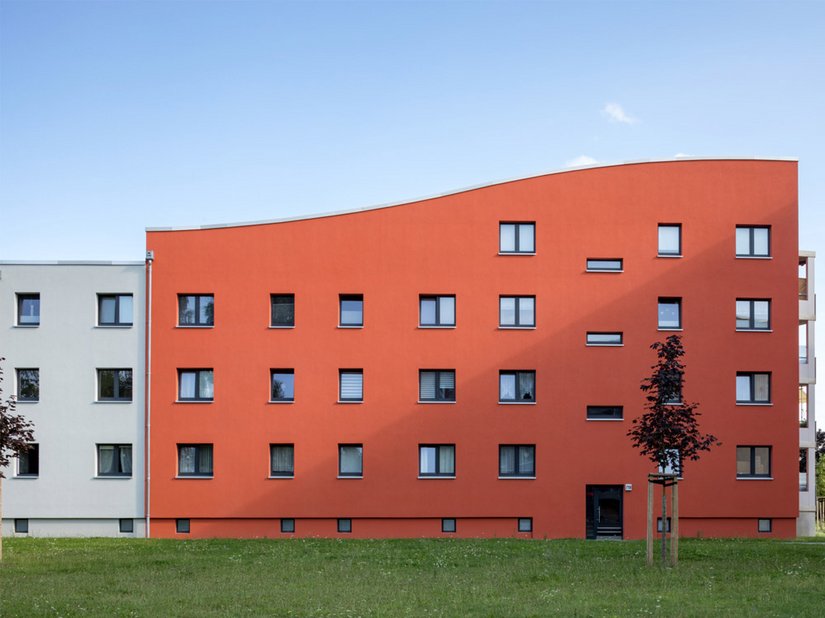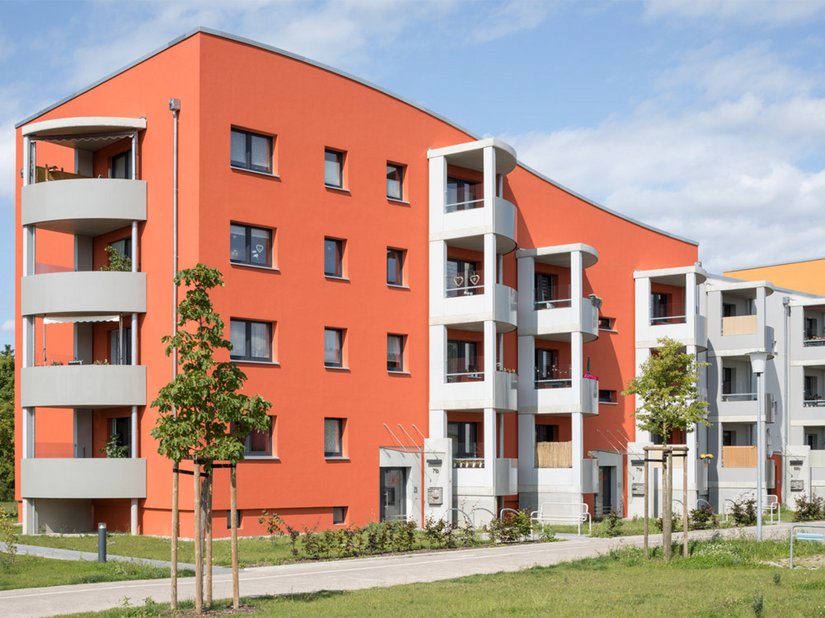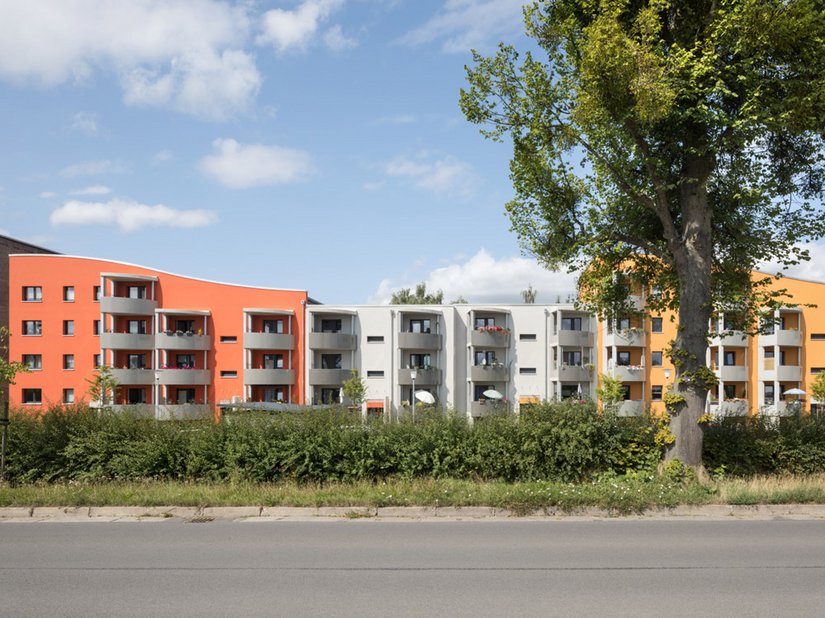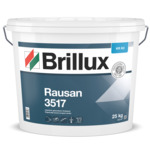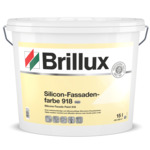The Wave, Malchin
Doubly successful transformation
Board
Location Basedower Str. 67a–71b, 17139 Malchin
Builder WOGEMA Wohnungsgesellschaft Malchin mbH, Malchin
Planning Ingenieurbüro Nötzel, Neubrandenburg
Execution Allguth Service GmbH, Parchim
The multi-level block of flats in Malchin (Mecklenburg-Western Pomerania) was erected in 1980 with a total of 106 individual dwellings. 40 years later, the building was not only renovated, but large parts of the structure were disassembled. That way, 106 dwellings with layouts that no longer met current needs gave way to 40 modern apartments with new balconies and exposed concrete. The structure used to have six floors across the whole width and now has three or four floors so that it is appropriately called “The Wave”. The different heights and a tricolor, energy-efficient render facade contribute to the positive atmosphere.
This kind of building project – redeveloping the energy systems, function and architecture to bring existing buildings up to current standards – is very common in Germany. As well as managing to improve the quality of living, the planners and contractors achieved a two-fold energetic success: Thanks to the facade renovations, the primary energy consumption has been reduced to 32 kWh/m². At the same time, they avoided the use of embodied energy that would have been necessary for a complete rebuild. That is exemplary.
Architecturally, the modernization of the building is a clear improvement. At the same time, the new division highlights the important urban planning size adjustments to nearby buildings. Here you can see how the transformation is equally aesthetically pleasing, and environmentally and resident-friendly.
From 106 dwellings with layouts that no longer met current needs to 40 modern apartments with new balconies and exposed concrete.
